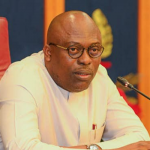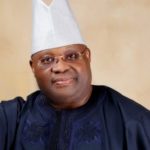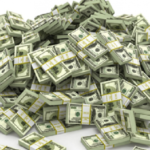The President of the United States, Donald Trump, has said that Russia and Ukraine are now “very close to a deal” that could end the war which started in 2022.
Trump made this known on Friday while arriving in Rome for the funeral of Pope Francis. He told reporters, “It’s been a good day for negotiations.” He also wrote on social media that “most of the major points are agreed to” and called on both sides to meet “at very high levels” to finalise the agreement.
This followed a meeting between Trump’s special envoy, Steve Witkoff, and Russian President Vladimir Putin in Moscow. Ukraine was not invited to the talks.
According to Kremlin official Yuri Ushakov, the meeting helped bring the positions of Russia and the US “closer together,” not only on the Ukraine crisis but also on “other international issues.” He added that they discussed restarting direct talks between Russia and Ukraine.
Ushakov described the three-hour meeting as “very useful.”
However, Ukrainian President Volodymyr Zelensky said there must be “real pressure on Russia” before any peace can happen. In his Friday night speech, he said, “Only with a full and unconditional ceasefire can we start to talk about territorial issues.”
Earlier in the day, Zelensky told the BBC that Ukraine is open to talks if the war is paused completely. “A full and unconditional ceasefire opens up the possibility to discuss everything,” he said.
There are reports that Ukraine may be asked to give up parts of its land taken by Russia. Trump has publicly supported Russia’s control of Crimea, a region it seized in 2014. But Zelensky strongly disagrees.
“Our position is unchanged – only the Ukrainian people have the right to decide which territories are Ukrainian,” Zelensky said in Kyiv.
Speaking further, Zelensky admitted, “We do not have enough weapons to take back Crimea,” referencing Trump’s comments in *Time* magazine where the US President said “Crimea will stay with Russia.”
According to reports by *Reuters*, the US peace plan would legally accept Russia’s control of Crimea and other occupied areas, including Luhansk. It would also block Ukraine from joining NATO, a move said to be part of the reason the war started.
On the other hand, Ukraine and its European allies only want to talk about occupied territories after a ceasefire is agreed.
The US peace plan has not been made public, but *Reuters* said it saw the proposal, along with counter-offers from Europe and Ukraine. The differences between the plans are still wide.
While the meeting in Moscow was ongoing, Trump told reporters, “We’re pretty close to a peace deal. I think we’re going to end up with a lot of good deals, including trade and tariffs.”
He also mentioned a delay in a rare earth minerals deal with Ukraine. “It is at least three weeks late,” Trump said. “I hope it will be signed immediately.”
That minerals deal was supposed to be signed in February but was delayed after a tense meeting between Trump and Zelensky in Washington.
Even as peace efforts continue, fighting has not stopped. Zelensky accused Russia of rejecting a 30-day ceasefire proposed in March. He wrote on social media, “It’s been 45 days since Ukraine agreed to President Trump’s proposal… Russia rejects all this. Without pressure, this cannot be resolved.”
Zelensky also blamed Russia for launching deadly missile attacks on Kyiv with weapons he said were partly made using parts from US companies. “The missile that killed the Kyiv residents contained at least 116 parts imported from other countries,” he said, “most of them, unfortunately, were made by US companies.”
Twelve people were killed in Thursday’s missile strike, and dozens were injured.
In response, Trump posted online, telling Russian President Putin directly, “Vladimir STOP!”
Still, Trump later told *Time* magazine he believes Ukraine caused the war when it started talking about joining NATO.
Russia currently controls nearly 20 per cent of Ukraine’s land, and the road to peace remains unclear, especially with Ukraine left out of direct talks in Moscow.











